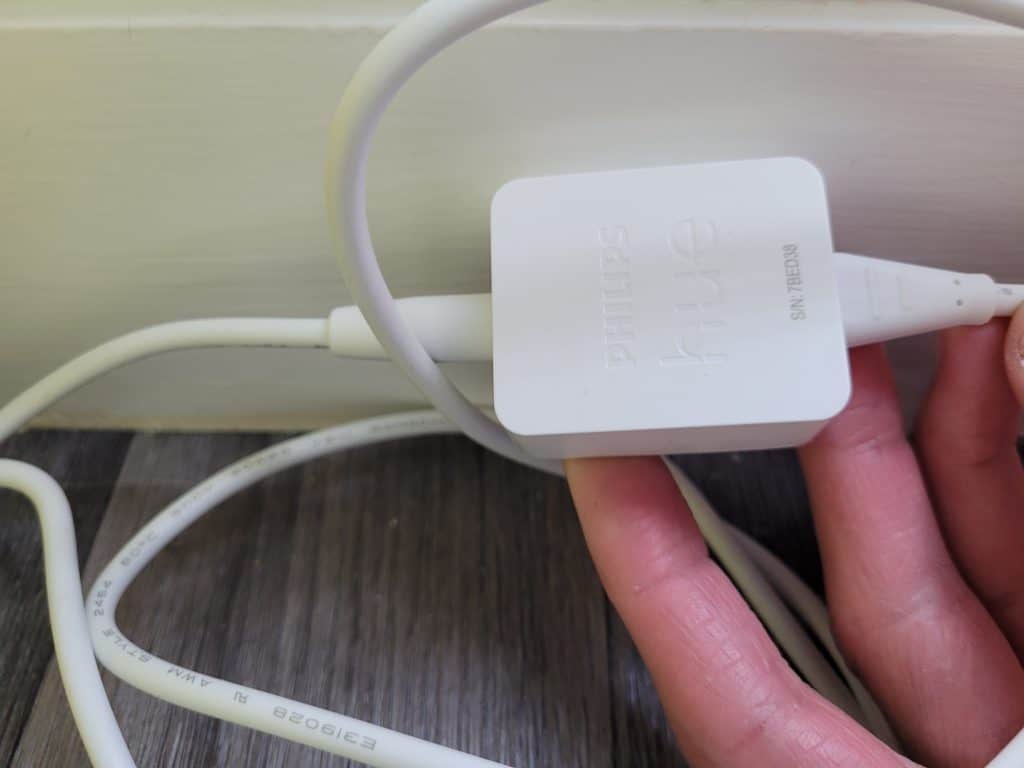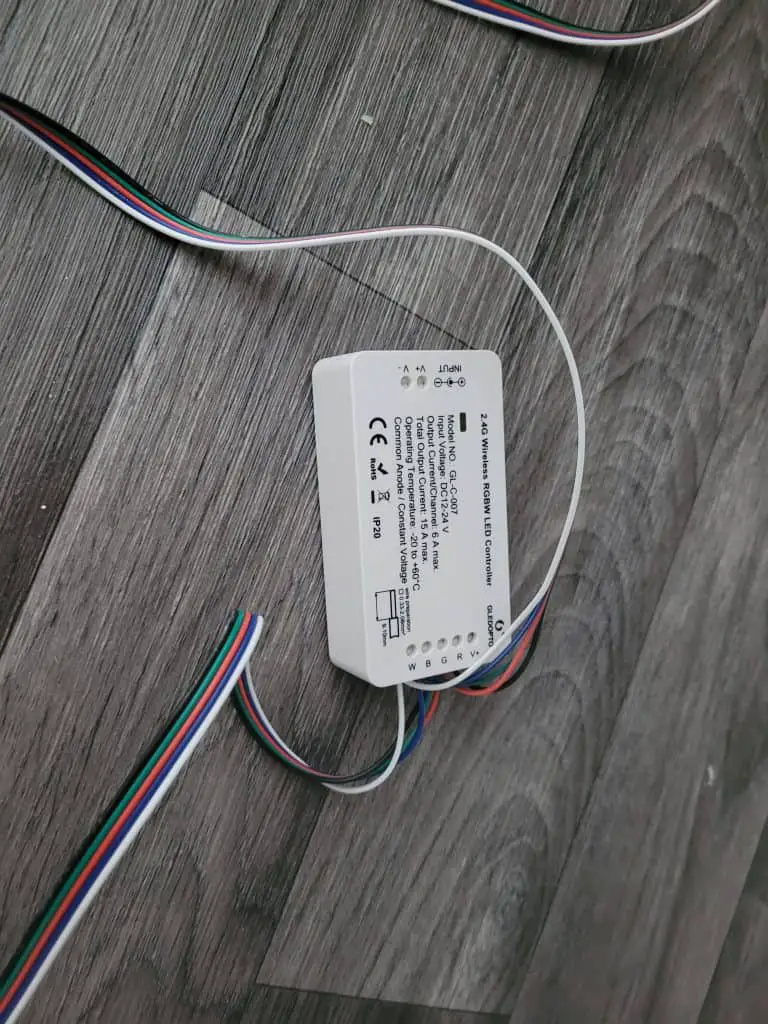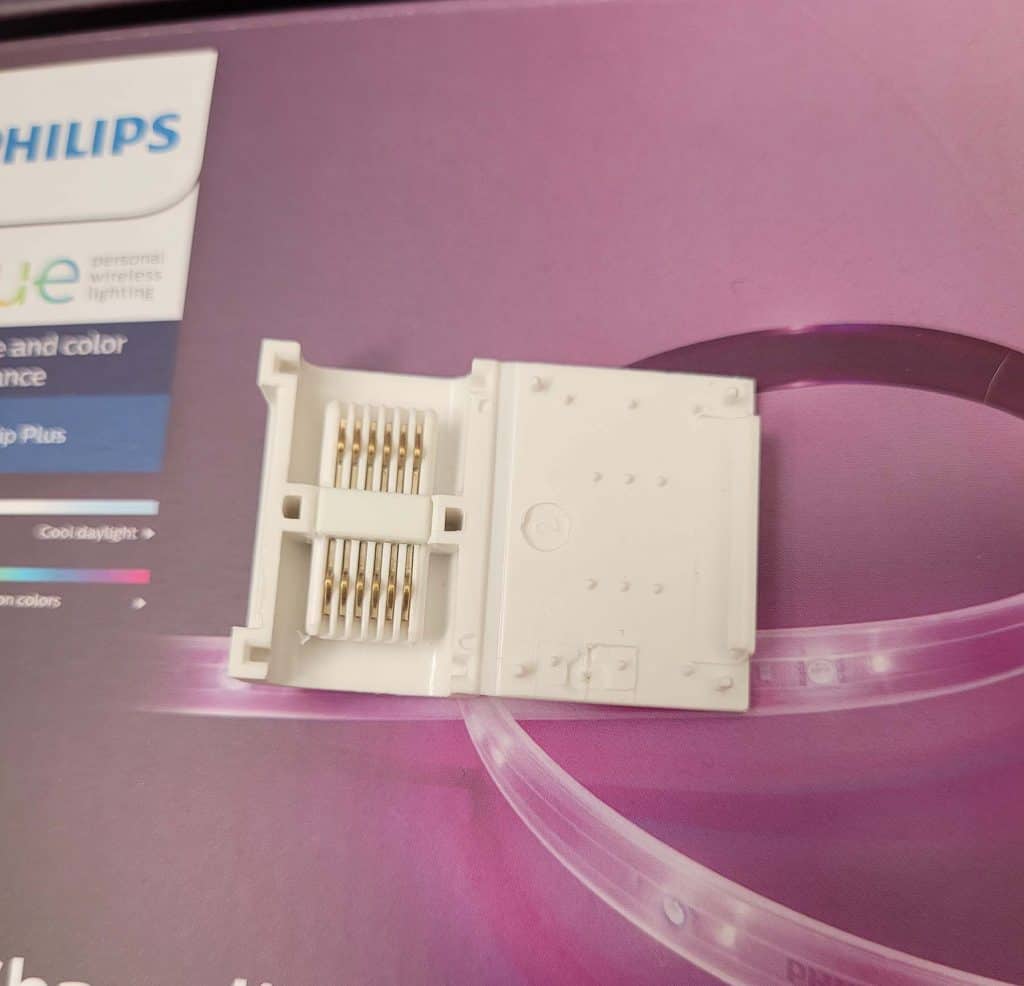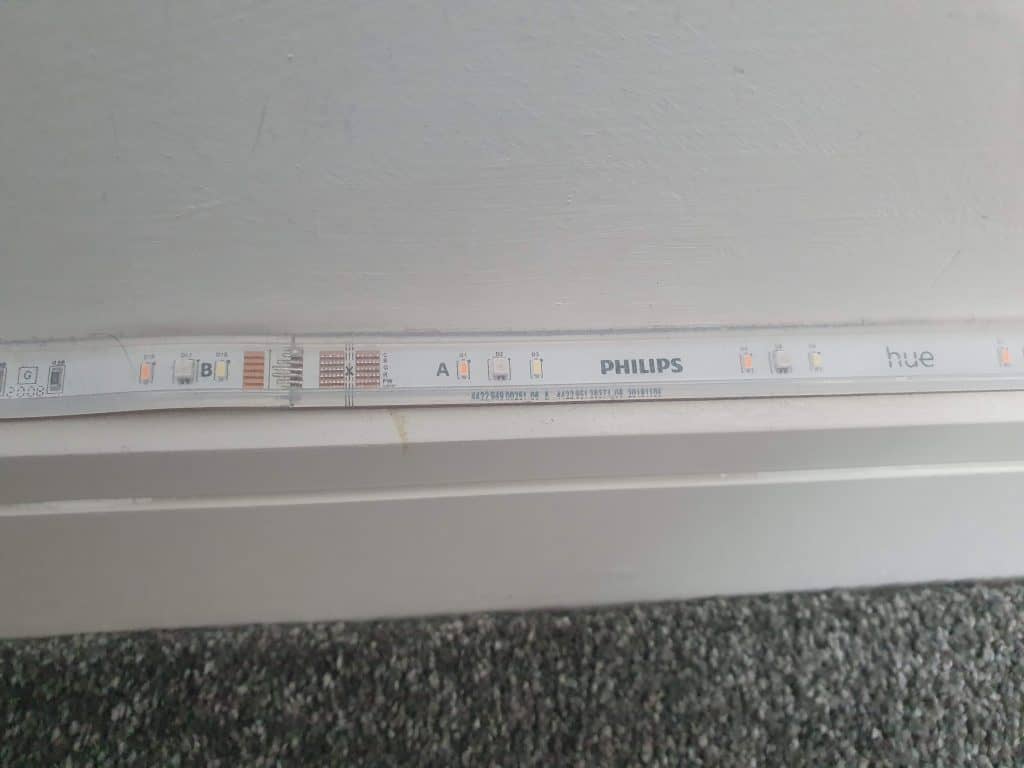Philips Hue’s Lightstrips provide pretty neat task lighting, backlighting, accent lighting, and decorative lighting applications, illuminating the room and creating a stylish ambiance. These LED smart lights are fairly small, which means they can be installed in many places within the room. For example, you can put them behind your TV, below your cabinets and furniture, and so much more.
The light strips come with the Philips Hue light strip controller, which enables you to remotely turn on/off or select the colors of your LED lights. It also lets you change the colors, control the effects and adjust the brightness levels of the lights, using your voice, an app, or automated schedules instead of doing so manually. The controller is Zigbee-based and it comes as part of your Philips Hue light strip kit:

However, it doesn’t come with Hue’s light strip extension kit, which is slightly different from the normal light strip kit.
Disappointingly, you can’t buy the controller individually to add to your extension kit. Are there any ‘workarounds’ to this problem? Alternatively, Can you purchase a different controller to use with your light strip extension kit from Hue?
Can You Use a Third-Party Controller with Your Hue Light Strips?

Theoretically yes, provided it runs on Zigbee. However, this isn’t very practical in the real world because of some reasons;
1. First, Hue’s light strips run at 24V. It means that you have to ensure any light strip controller that you decide to integrate with your striplights also runs at this. Otherwise, using a light strip controller with a different voltage rating may lead to your Hue light strips regularly cutting out and/or malfunctioning. Yet, many third-party controllers only run at 12V, which may lead to problems if you pair them with your LED lights.
2. Second, you won’t have great color matching as well as transitions unlike if you use the Hue light strip controller. That’s because the company created some specific color and hue choices with their official controller that third-party LED light strip controllers find hard to replicate.
If you decide to buy a third-party Hue light strip controller anyway, here’s what you should keep in mind;
- First, the controller must be 6-pin because original Hue light strips come only with a 6-pin connector designed to connect seamlessly with the Hue controller. Most importantly, there are four types of indoor Philips Hue LED light strips available. These are; the V1, V2, V3, and V4 Hue light strips with the last one being the latest.
Now, the first three light strips (V1, V2, and V3) all feature a STANDARD 6-pin connector or adapter. On the contrary, the latest one uses a MICRO 6-pin connector and NOT the standard connector. Keeping that in mind, pay attention to your light strips’ connector design. If it’s the standard 6-pin, choose an LED light strip controller that supports just that. If it’s micro-6-pin, again, look for a controller that works with just that.

- Secondly, it must be an RGB+CCT–supporting Hue light strip controller that provides full control of white colors. RGB is an abbreviation for Red, Green, and Blue, which are the primary colors and also the most common base colors for LED light strips. These are also the colors LED light strips and electronic displays use to create white!
On the other hand, CCT stands for “Correlated Color Temperature”. This phrase means that the LED striplight can adjust its color temperature to change between warm white and white. Philips Hue LED light strips do have this capability hence they are RGB+CCT rated.
To ensure that you’ll get the most out of your third-party light strip controller, choose a controller that is equally rated RGB+CCT.
Philips Hue V1-V3 Lightstrip Off-Cuts Limitation
Some LED light strips can be cut and then you can use the off-cut (the remaining part that you have cut off). But when it comes to Philips Hue light strips, you often can’t do that, which is quite disappointing.
You see, an LED light strip is generally fixed in length and sometimes you may end up buying one that’s too long than the length you need. In that case, you can cut the light strip in the right place to fit a specific area of your home without destroying its functionality, thanks to the designated cut lines that show you where to cut:

While light strips from some brands will continue working seamlessly after reducing their lengths, the V1-V3 Philips Hue light strips may not. Many users have reported issues with their light strips, which the company insists occurs due to cutting outside of these lines.
Just to be on the safe side, don’t cut your Hue light strip (and plan to re-use them) if it’s not a V4, which comes with a connector to reuse the off-cute, pairing them with other Hue light strips. All the Hue light strips have a length of 2 meters. However, the V4 light strip’s length can be extended by up to 10 meters, notably by adding 1-meter extensions.
By the way, another important use of an LED light strip controller is to help reuse off-cut light strips. Unfortunately, the fact that Philips doesn’t sell their controller separately makes it difficult for their customers who don’t have one to reuse their off-cut light strips. Maybe it’s because the company wants to promote its LED light strip sales, but at whose expense? It’s customers?
Sure there are some good third-party controllers for these light strips, but getting the perfect one is never a simple undertaking. Plus, many Hue customers are brand-loyal customers who simply don’t want to mix their Hue products with products from other brands.
It would be great if the company lifted this restriction to allow buyers to buy this wonderful device separately. That would be a great way for them to appreciate their loyal customers and at the same time make more money.
Conclusion
Philips Hue offers some of the greatest LED light strips on the market. Their lineup includes the V1, V2, V3, and V4 LED light strips. These smart light strips offer better color combinations suitable for any ambiance you may desire to create in the room. To get the most out of your light strips, ensure that you have the Philips Hue LED light strip controller.
Although there are other third-party controllers that you can use to achieve the same purpose, this one just works wonders. It’s only unfortunate that it’s not sold separately.
